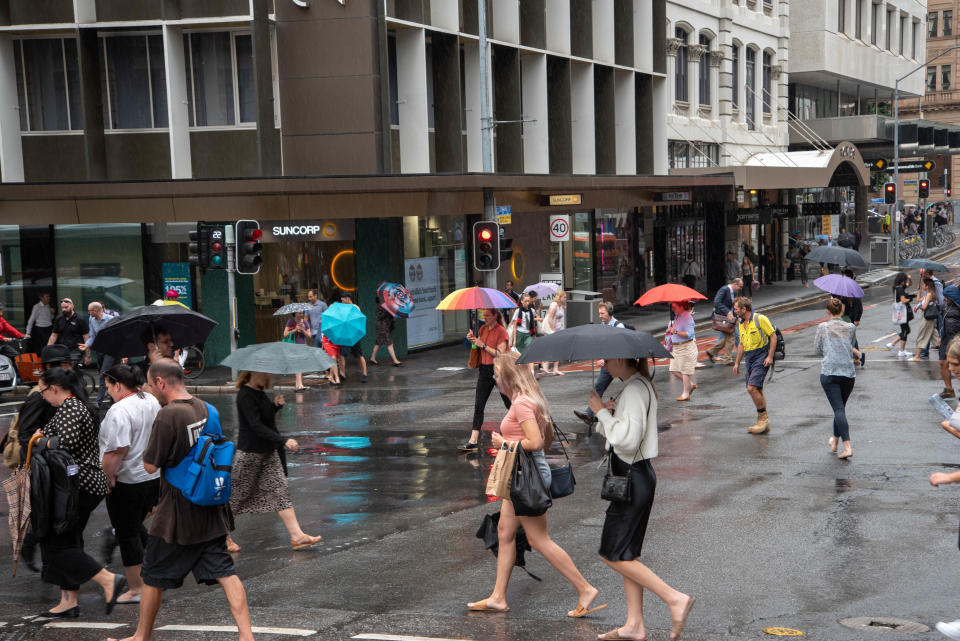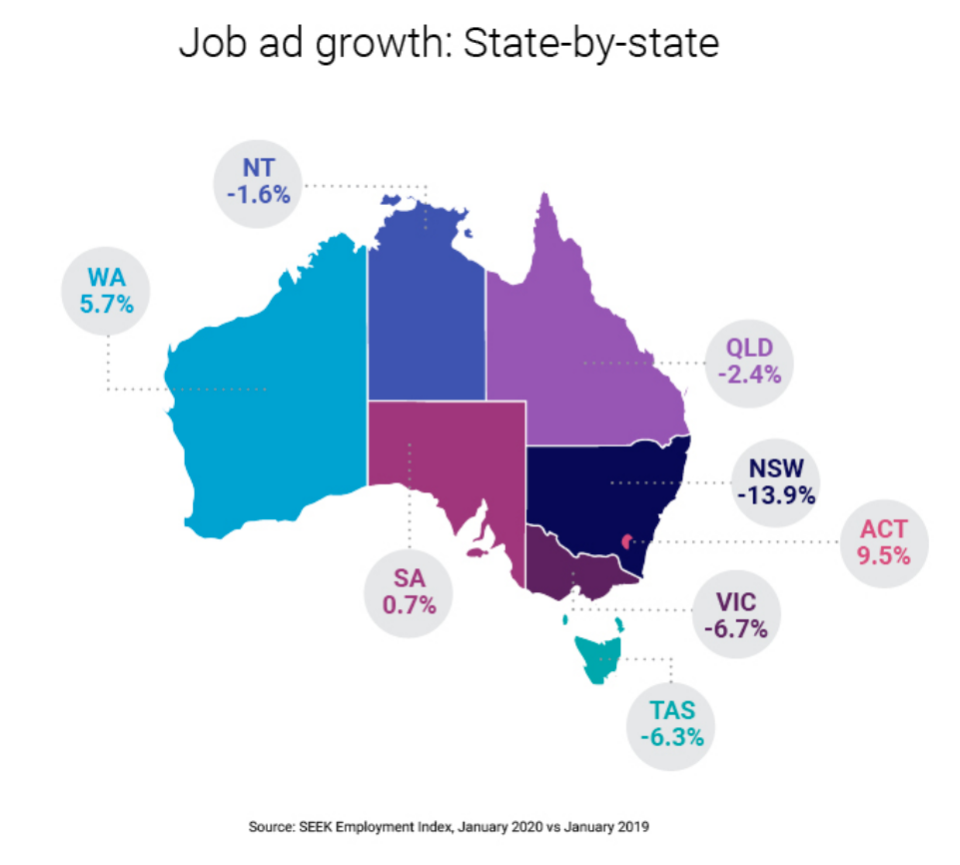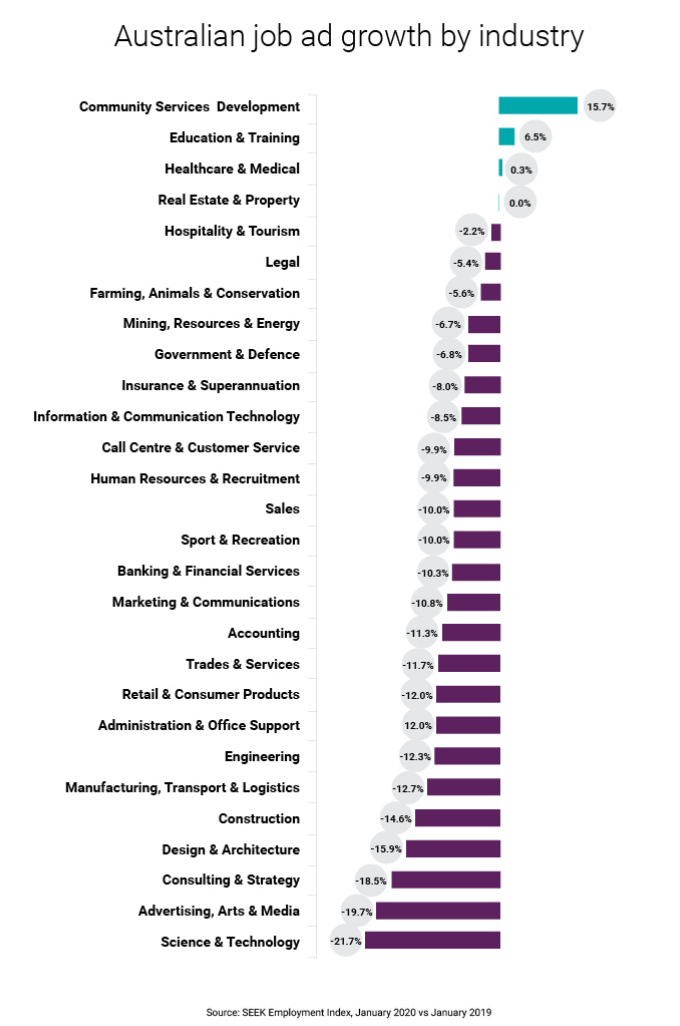726,000 out of a job: Aussie jobless rate jumps to 5.3%

The national unemployment rate has jumped from 5.1 per cent to 5.3 per cent in the month of January, the latest Australian Bureau of Statistics figures have revealed.
The rise of 0.2 per cent is higher than expected, and means another 31,000 Australians out of a job, rising to 725,900.
Aussies also worked less: the total monthly hours worked fell by 8.1 million hours, with the underemployment rate rising from 8.3 per cent in December 2019 to 8.6 per cent in January.
Related story: ‘Fight for our lives’: 450 jobs on the line as another retailer folds
Related story: How a 438-year-old tradition could save Australia’s economy
Related story: War on billionaires: Australia among global tax havens fuelling inequality
While full-time employment rose by 46,200 people to 8,882,200 people, the number of people in part-time jobs fell by 32,700 to 4,113,300.
Australia’s bushfires had disrupted ABS’ data collection in some areas of NSW and Victoria in January, but didn’t have a major impact on accuracy, according to the bureau.
“The ABS confirmed that the disruption from the bushfires did not have a notable impact on key headline statistics and that no additional statistical interventions were required,” the bureau said in their statement.
‘Bitterly disappointing’: Economist slams government, Reserve Bank
Independent economist Stephen Koukoulas said the news about the labour market was “bitterly disappointing” and signalled weak demand for labour.
“The economy is simply not growing fast enough to drive the unemployment rate lower, and both the Reserve Bank of Australia and government should be held account for their inaction in kick-starting growth,” he told Yahoo Finance.
“Getting more people in work would have the added benefit of seeing wages growth move higher.
“Instead, the government continues to have an unhealthy obsession with getting the budget back to surplus.”
And to think, the RBA still refuses to cut interest rates. Some quack-wankery about 'risks 5 to 10 years down the track' if it eases monetary policy highlights the RBAs unquestionable ineptitude
— Stephen Koukoulas (@TheKouk) February 20, 2020
The government could “easily implement” policies that would boost growth and give unemployed Australians a job, Koukoulas added.
“The RBA, who have made a huge policy error in recent years, continues to shy away from easy monetary policy for some unproven fears about household debt being a problem in Australia. It keeps missing its inflation target and is accountable for the weak labour market which is creating misery for many Australians.
“The data demand an about face on economic policy now. Waiting before moving risks costing tens of thousands Australians a job.”
Job ads fall 6.5 per cent in 2019
The rise of Australia’s unemployment figures comes as Seek reveals job ads were down by 6.5 per cent year on year across the nation.
“After Australia’s devastating bushfire season, and the uncertainty surrounding novel coronavirus, we expect short term growth to remain challenging as sectors such as hospitality and tourism, agriculture, forestry and fishing, retail and the higher education sector remain exposed,” said SEEK ANZ managing director Kendra Banks.
Job ad growth was strongest in the ACT, rising 9.5 per cent between January 2019 and January 2020, followed by Western Australia at 5.7 per cent.
South Australia saw job ads rise by 0.7 per cent – but every other Australian state took a hit.

Job openings in NSW were scarce, dropping by 13.9 per cent across 2019, while Victoria and Tasmania saw 6.7 per cent 6.3 per cent fewer job ads.
Openings in Queensland and Northern Territory also fell by 2.4 per cent and 1.6 per cent, according to SEEK’s latest employment report.
Only three sectors saw job ad growth in 2019: community services development, education and training, healthcare and medical.

Every other sector saw a fall in job ads, with the most severe drop seen in the science and technology sector of 21.7 per cent.
Make your money work with Yahoo Finance’s daily newsletter. Sign up here and stay on top of the latest money, news and tech news.
Follow Yahoo Finance Australia on Facebook, Twitter, Instagram and LinkedIn.

 Yahoo Finance
Yahoo Finance 
